Starting over is exhausting. You start a new program, crush it for a week or two, then life hits, motivation dips, and you take a few days off. Then you feel defeated and either start over or change to something else. If this sounds like you, you’re doing it all wrong.
This article goes over what you need to know to stick to a workout routine and stay consistent. Real progress doesn’t come from jumping to the next shiny plan, it comes from sticking to the boring, effective foundational principles long enough for them to work.
Why Sticking to a Routine Beats Starting Over
Sticking to the same routine (instead of finding one you think might be better) is scientifically proven to be better for your progress. This is because of the uncanny ability of the human body (including yours) to adapt. If you are using any programming that has progressive overload, the program is designed to work with your body’s adaptation. This means that you’ll be doing the same routine for 4-5 weeks, then switching it up.
If you are constantly changing your fitness routine, your body actually doesn’t have anything consistent to adapt to. This is why you might see plateaus if you are only doing HIIT workouts and other group cardio classes.
Consistency compounds results. When you stick to a routine, even imperfectly, you maintain your progress, habits, and momentum. Starting over, on the other hand, means rebuilding from scratch each time, which can waste your energy, deflate your confidence, and delay results. Progress doesn’t require perfection, but it does require showing up repeatedly. In the end, staying consistent, even at 50–70% of the time, beats stopping and starting over at 0% every time.
Stop Program-Hopping
“Program hopping” is defined as constantly changing programs or not seeing a full program through.
Reasons people “program hop”
- You don’t see results quickly enough (often too early for real results to appear)
- You become unmotivated or bored
- You see the next shiny program on Instagram
- You believe that the “perfect” program is out there already, you just haven’t found it yet
Heads up, the perfect program is the one you stick to.
The truth is, sticking to a subpar program constantly is better than changing programs to try and find the right fit. There actually is no perfect pre-made program, because your body is unique. The perfect program is one that is individualized for you. Hiring a qualified trainer to create and build that program with you is ideal.
If you want to try a program instead of hiring a trainer, find or create a well designed and thought-out program that focuses on progressively getting stronger and more efficient in your movements.
As for boredom, it might be something you need to accept at some level. Good programming means you’ll be doing the same movements over and over again for at least a few weeks, because that’s what actually works for optimal strength gains. When you stick with the boring for long enough, you’ll see strength gains and body composition changes that will help you become excited and more invested in your program.
Changing Trainers Too Often? Here’s Why That Backfires
Switching trainers every couple of months is just as damaging as constantly changing workout programs. If you’re bouncing from one online coach to the next—chasing faster results or hoping the next trainer will finally “get you”—here’s the hard truth: no coach can work magic in six weeks. Your body simply won’t transform in that short of a time frame, no matter what routine you follow. Fitness is a lifelong pursuit, and real progress requires giving your coach enough time to understand you, your goals, and your movement patterns.
Every good trainer has a process. They need time to assess, adjust, and individualize your program. If you jump ship before they can tailor your training to your lifestyle, you’re robbing yourself of the results you’re working for.
And here’s another downside: every time you switch, you start back at square one—new consults, new intake forms, new movement screens. Instead of building strength and momentum, you’re stuck in “intro mode.” Stick with one coach long enough, and that’s when the real progress happens.
If you think you need to fire your trainer or you need advice on how to hire a good trainer, here are the top three questions to ask yourself:
- Did your trainer ask you what your fitness goals are? (“no” is the bad answer, of course)
- Do they give you random workouts every time you come to workout with no rhyme or reason? (this shows a lack of planning for your fitness goals)
- Do they constantly ask you what you want to work on that day? (again, not planning your workouts based on your goals)
How Long Does it Take to See Results?
Here’s the bad news. Getting the body you want will take a long time and a lot of consistency. Most trainers say the body you really want (the one you see on Instagram) will actually take years to create.
The good news is that if you are a beginner to strength training or any kind of programming, you will see beginner gains. Beginner gains happen because your nervous system rapidly learns to recruit muscles efficiently while your body responds to a new training stimulus. As you continue training, muscle growth requires greater volume, intensity, and precise programming. In other words, the closer you get to your genetic potential, the harder it becomes to keep making gains.
That’s why it’s important to set SMART (specific, measurable, achievable, relevant, and time-bound) fitness goals that focus on your health and strength rather than just aesthetics. Fitness is a lifelong journey built on a solid foundation of consistent habits. There’s no secret to seeing results, it simply takes consistency and time.
How to Choose a Workout Program You’ll Stick With
Finding the “best” program on paper is not what you’re looking for. The best program is one that fits your life and one that you’ll actually stick with.
Here are some important considerations when choosing the best program for you:
- It fits your schedule: If you’re a busy parent or work 12-hour shifts, don’t sign up for a 6-day-a-week bodybuilding split. Be honest with how many days you can realistically train
- Enjoy at least part of it: No one loves every single workout, but if you dread the entire program, you’re not going to stick to it. Choose a style of training you like— Enjoyment equals consistency.
- It aligns with your goals: Don’t pick a fat loss program if your goal is to get strong. Make sure the workouts are pushing you in the direction you want to go.
- It’s progressive, not random: Specificity is important. What are you training for? A good program builds on itself. If every workout is totally different and there’s no plan behind it, it’s just exercise—not training. You want something that challenges you over time and tracks progress.
- You have support or accountability: If you workout with a coach or trainer, accountability and support are built in. Otherwise, make sure you’re training in a community setting (in a gym or with a friend) or getting support on social media.
Build a Workout Habit, Not Just a Hype
Sustainability is your north star, which means you need to be honest with yourself and not “should” yourself. You might think you should go to the gym an hour a day 5 days a week. But want can you actually do? Start there. You will see results even if you consistently train only 30 minutes at a time 2-3 times a week.
Knowing how to stay motivated to workout is tricky. You should also enjoy what you’re doing. Setting goals to get strong enough to do certain movements is a fun way to incentivize strength training. If you like running or biking, do that. However, no matter what you do, strength train at least once a week.
Another way to build a strong workout habit is to habit stack. Let’s say you drive past the gym on your way home from work. Try adding a pitstop at the gym and committing to 20 minutes of working out on your drive home. Habit-forming is the key to long-term success.
How to Stick to a Workout Routine for the Long Haul
If you’re choosing a fitness program, do your research, stick with the program, and have some faith. Don’t have unrealistic expectations that you’ll significant changes in a couple of weeks. Remember, changes happen over a long period of time from sticking to the same programming and doing the same movements over and over and over again. “Shocking” or “confusing” muscles with random workouts or cardio bursts, isn’t actually a real fitness principle. Programming needs to have repetition to allow the body to adapt to the stimulus provided.
The same advice goes for hiring a coach or trainer. Do your research and once you find someone you like, allow time to do its thing. If your trainer is good, your workouts shouldn’t kill you or add that much stress to your life while your strength progresses.
Want to learn more about choosing the right program and sticking with it?



